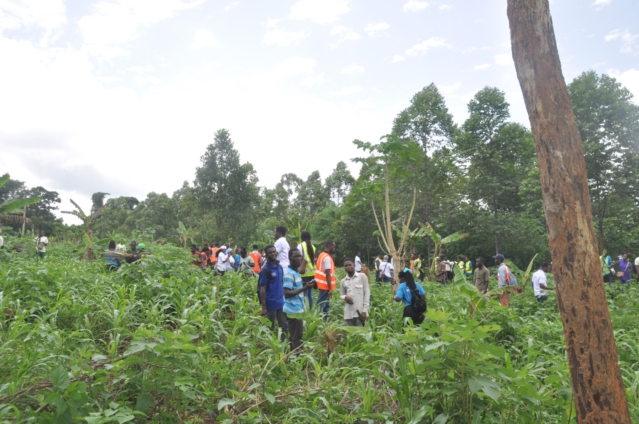The Sustainable Development Goals Report 2023: 'Special Edition Towards a Rescue Plan for People and Planet' has said it could take the world another 25 years to halt deforestation while vast numbers of species worldwide are threatened with extinction.
According to the report, which was released on July 10, “if ever there was an illumination of the short-sightedness of our current economic and political systems, it is the ratcheting up of the war on nature,” adding that a small window of opportunity to limit the rise in global temperatures to 1.5 degrees Celsius, prevent the worst impacts of the climate crisis, and secure climate justice for people, communities, and countries on the front lines of climate change is fast closing. Carbon dioxide levels continue to grow, reaching levels not seen in the last 2 million years.
“Terrestrial ecosystems are vital for sustaining human life, contributing to over half of global GDP and encompassing diverse cultural, spiritual, and economic values. However, the world faces a triple crisis of climate change, pollution and biodiversity loss. Escalating trends of forest loss, land degradation and the extinction of species pose a severe threat to both the planet and people.
"Despite some progress in sustainable forest management, protected areas, and the uptake of national biodiversity values and natural capital accounting, most improvements have been modest. The recently adopted Kunming-Montreal Global Biodiversity Framework provides renewed impetus for Goal 15, outlining four outcome-oriented goals to be achieved by 2050 and 23 targets to be achieved by 2030.”
The analysis revealed that, about 100 million hectares of net forest area have been lost over the last two decades, and worldwide forest coverage has declined from 31.9 percent (4.2 billion hectares) in 2000 to 31.2 percent (4.1 billion hectares) in 2020.
Agricultural growth is also identified as the direct cause of nearly 90% of worldwide deforestation (cropland accounts for 49.6% and livestock grazing accounts for 38.5%). From 2000 to 2018, oil palm harvesting contributed for 7% of worldwide deforestation.
“Agriculture consumed large forested areas in many countries across Latin America, the Caribbean, sub-Saharan Africa and South-East Asia between 2015 and 2020. Conversely, many countries in Asia, Europe and Northern America maintained or increased their forest area over the same period. Global and regional efforts to sustain forest ecosystems as well as their social, economic and environmental functions are essential, in particular for developing countries and the tropics,” it said.
4.1 million hectares of primary tropical forest were lost worldwide in 2022, an area the size of Switzerland, which is comparable to the loss of 11 football fields per minute.
This is according to the World Resources Institute (WRI), in its recent research released on June 27, 2023. It said that, the Congo, the world's second-largest rainforest after the Amazon, is continuing to vanish, with half a million hectares (mha) lost in 2022.

The rainforest is found in six African countries: Cameroon, Central African Republic, Republic of Congo, Democratic Republic of Congo (DRC), Equatorial Guinea, and Gabon. The DRC contains 60% of the world's forest.
The report released by the World Resources Institute (WRI) and the University of Maryland on Global Forest Watch (GFW), an open-source web application that monitors global forests in near real-time said, the DRC lost over 500,000 hectares in 2022 adding that, the rate of primary forest loss in the DRC is continuously high.
Brazil accounted for 43% of total tropical primary forest loss, with 1.8 million hectares lost, followed by the Democratic Republic of the Congo (12.1%) and Bolivia.
According to the GFW, natural forest degradation produced 2.7 billion tonnes of CO2 — out of the 43 billion tonnes emitted globally each year.
Primary forests are forests of natural tree species with no plainly obvious signs of human activity. These provide a variety of ecological services but are under constant attack.
According to the report, the majority of primary forest loss occurs as a result of small clearings near cyclical agricultural areas. Cyclical agricultural areas are defined as land that has been cleared for short-term crop cultivation and then left fallow to allow forests and soil nutrients to rebuild.
The Democratic Republic of the Congo has one of the world's highest population growth rates — 3.19 percent — and the consequent rise in food demand has resulted in shorter fallow seasons and the development of agriculture into primary forest.
Latest Stories
-
Paris 2024: Opening ceremony showcases grandiose celebration of French culture and diversity
3 hours -
How decline of Indian vultures led to 500,000 human deaths
4 hours -
Paris 2024: Ghana rocks ‘fabulous fugu’ at olympics opening ceremony
4 hours -
Trust Hospital faces financial strain with rising debt levels – Auditor-General’s report
5 hours -
Electrochem lease: Allocate portions of land to Songor people – Resident demand
5 hours -
82 widows receive financial aid from Chayil Foundation
5 hours -
The silent struggles: Female journalists grapple with Ghana’s high cost of living
5 hours -
BoG yet to make any payment to Service Ghana Auto Group
5 hours -
‘Crushed Young’: The Multimedia Group, JL Properties surprise accident victim’s family with fully-furnished apartment
6 hours -
Asante Kotoko needs structure that would outlive any administration – Opoku Nti
6 hours -
JoyNews exposé on Customs officials demanding bribes airs on July 29
7 hours -
JoyNews Impact Maker Awardee ships first consignment of honey from Kwahu Afram Plains
8 hours -
Joint committee under fire over report on salt mining lease granted Electrochem
8 hours -
Life Lounge with Edem Knight-Tay: Don’t be beaten the third time
8 hours -
Pro-NPP group launched to help ‘Break the 8’
9 hours

